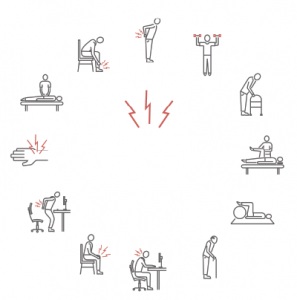
Prokopenko Oleg/shutterstock.com
The alarming statistics on prescription opioid overdoses are well known to medical professionals, thanks to the Centers for Disease Control and Prevention (CDC)’s widely cited finding that deaths from opioid analgesics have increased fourfold since 1999.1 Half of all fatal drug overdoses now involve opioids prescribed by a doctor.
Meanwhile, a lack of rigorous research demonstrating long-term effectiveness of opioids in relieving chronic, non-cancer pain contrasts with well-documented adverse events from these prescriptions, including opioid use disorder and resulting social problems, high rates of emergency room visits and hyperalgesia—even increased risk of nonvertebral fracture for rheumatoid arthritis (RA) patients on opioid analgesics.2
Many stakeholders in the opioid overdose epidemic, including the Drug Enforcement Administration, Surgeon General, Food and Drug Administration, law enforcement, legislators, hospitals and medical associations, are all saying the same thing: Doctors are writing too many opioid prescriptions.
So how are frontline providers responding? Opioids are still part of the analgesic armamentarium used by rheumatologists, and an individualized, evidence-based approach tailored to each patient is the recommended strategy. “But studies don’t have that much data to show that opioids help my patients,” says Philip J. Molloy, MD, FACP, a rheumatologist at Beth Israel Deaconess Hospital in Plymouth, Mass.
In 2015, more than 33,000 Americans died from overdoses of legal and illegal opioids. One-fifth of patients with non-cancer pain will receive an opioid prescription and one out of four who receives long-term opioid therapy in a primary care setting will struggle with addiction, according to the CDC. Problems from prescription drugs include patients taking drugs as prescribed but having adverse reactions, as well as using prescriptions for nonmedical reasons and diversion of prescribed drugs.
However, unaddressed chronic pain was described by the Institute of Medicine (IOM) in 2011 as another major public health concern—one costing between $560 billion and $635 billion per year in medical care, missed work and lost productivity.3 The IOM concluded that more than 100 million Americans suffer each year from chronic pain lasting 30 to 60 days or more. Musculoskeletal sources of pain are common, and many of those with chronic pain are patients with rheumatologic conditions who visit rheumatologists.
Concerns about untreated pain and the vast suffering it represents were behind a pendulum swing toward more aggressive treatment of pain over the past two decades. And now the pendulum has swung back to where the Centers for Medicare and Medicaid Services plans to drop some pain-related questions from its hospital patient satisfaction surveys out of concern that such questions have encouraged hospitals to overprescribe opioids. Others have sought to end Pain as a Fifth Vital Sign programs that routinely ask patients to rate their subjective experience of pain on a 0 to 10 scale. A California legislator in March proposed imposing a tax on opioid wholesalers for OxyContin and other opioids, with proceeds going to fund drug rehabilitation services.4
‘We understand the challenge of the difficult patient, & chronic, untreated pain is very real for some of our patients.’ —Ronald Rapoport, MD
What Is the Rheumatologist’s Role?
Rheumatologists confront these issues every day, says Ronald Rapoport, MD, chief of the Division of Rheumatology for Southcoast Health in Fall River, Mass. They try to resolve their patients’ pain by reducing the underlying disease with disease-modifying anti-rheumatic drugs and other treatments, he says. “We understand the challenge of the difficult patient, and chronic, untreated pain is very real for some of our patients.”


